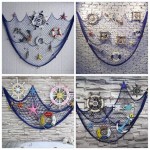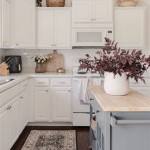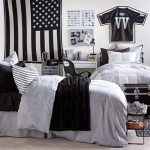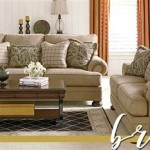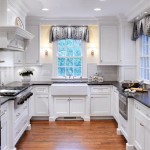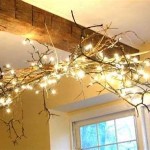Mid-Century Modern Home Decor
Mid-century modern design, often abbreviated to MCM, represents a distinct aesthetic movement that originated in the mid-20th century, spanning roughly from the mid-1930s to the mid-1960s. Characterized by clean lines, organic forms, and a focus on functionality, this style continues to resonate with homeowners and interior designers today. Its enduring appeal lies in its timeless elegance and ability to seamlessly blend with various other design aesthetics.
The core principles of mid-century modern design emphasize simplicity and utility. Form follows function, meaning the design of an object should be primarily based upon its intended purpose or function. Ornamentation is minimal, focusing on the inherent beauty of materials and craftsmanship. This emphasis on functionality creates spaces that are both aesthetically pleasing and practical for daily living.
Natural materials play a significant role in achieving the mid-century modern look. Wood, particularly teak, walnut, and oak, is frequently used for furniture, flooring, and wall paneling. Its warm tones and organic texture add a touch of natural beauty to the space. Other natural materials like stone, leather, and wool are also common, further enhancing the connection to nature.
Color palettes in mid-century modern design often incorporate a combination of neutral and bold hues. Earthy tones such as beige, brown, and gray provide a grounding base, while vibrant accents of orange, yellow, green, and blue inject personality and visual interest. These pops of color are strategically used in furniture upholstery, artwork, and decorative accessories.
Furniture within the mid-century modern aesthetic is characterized by its clean lines, tapered legs, and organic shapes. Iconic pieces like the Eames lounge chair, the Noguchi coffee table, and the Saarinen tulip table exemplify the style's emphasis on both form and function. These pieces are not only visually appealing but also ergonomically designed for comfort and practicality.
Lighting is another crucial element of mid-century modern design. Pendant lights, floor lamps, and table lamps often feature sculptural forms and geometric shapes. Materials like brass, chrome, and glass are commonly used, adding a touch of elegance and sophistication. The focus is on providing both ambient and task lighting to create a warm and inviting atmosphere.
Textiles and patterns contribute significantly to the overall aesthetic of mid-century modern interiors. Geometric patterns, abstract designs, and organic motifs are frequently incorporated into upholstery, curtains, and rugs. These patterns add visual interest and texture to the space without overwhelming the clean lines and simple forms that define the style.
Decorative accessories play a key role in completing the mid-century modern look. Sculptural objects, ceramic vases, and vintage artwork are often used to add personality and character to the space. These accessories are carefully chosen to complement the overall aesthetic and enhance the sense of sophistication.
Incorporating mid-century modern elements into a contemporary home can be achieved through various approaches. One strategy is to focus on key furniture pieces, such as a statement sofa or a classic lounge chair. These iconic pieces can serve as anchor points for the design, establishing the mid-century modern aesthetic.
Another approach is to incorporate mid-century modern inspired lighting fixtures. Pendant lights with geometric shapes or floor lamps with brass finishes can instantly add a touch of mid-century charm to a space. These lighting elements not only provide illumination but also serve as decorative accents.
The use of color and pattern can also effectively evoke the mid-century modern aesthetic. Incorporating a neutral color palette with pops of bold hues in upholstery, artwork, or decorative accessories can create a visually appealing and balanced space. Geometric patterns and abstract designs can be introduced through textiles and rugs.
When incorporating mid-century modern elements, it is crucial to consider the overall balance and harmony of the space. Avoid overcrowding the room with too many mid-century modern pieces. Instead, focus on selecting a few key elements that will effectively convey the desired aesthetic while maintaining a sense of spaciousness and functionality.
Mid-century modern design continues to be a popular choice for homeowners seeking a timeless and stylish aesthetic. Its emphasis on clean lines, organic forms, and functionality creates spaces that are both visually appealing and practical for modern living. By incorporating key elements such as iconic furniture pieces, appropriate lighting fixtures, and carefully selected color palettes and patterns, individuals can effectively achieve the mid-century modern look in their homes.
:strip_icc()/5c48ff_5039b19792c04cda85d4a706e47cd68f_mv2_d_6530_4436_s_4_2-2614b1611d724a2b8bf69ac17ab410de.jpeg?strip=all)
15 Midcentury Modern Décor And Design Ideas

45 Irresistibly Stylish Midcentury Modern Living Room Idea

45 Irresistibly Stylish Midcentury Modern Living Room Idea

How To Get Midcentury Modern Style On Any Budget Dream Home 2025 Behind The Design

How To Add Mid Century Modern Flair Your Home Gdc Furniture

45 Irresistibly Stylish Midcentury Modern Living Room Idea

Mid Century Interior Design 7 Tips For Creating A Timeless Modern

Mid Century Interior Design 7 Tips For Creating A Timeless Modern

What You Didn T Know About Mid Century Modern Home Decor Inspirations Essential

Inside A 1959 Vintage Mid Century Modern Utopia Atomic Ranch
